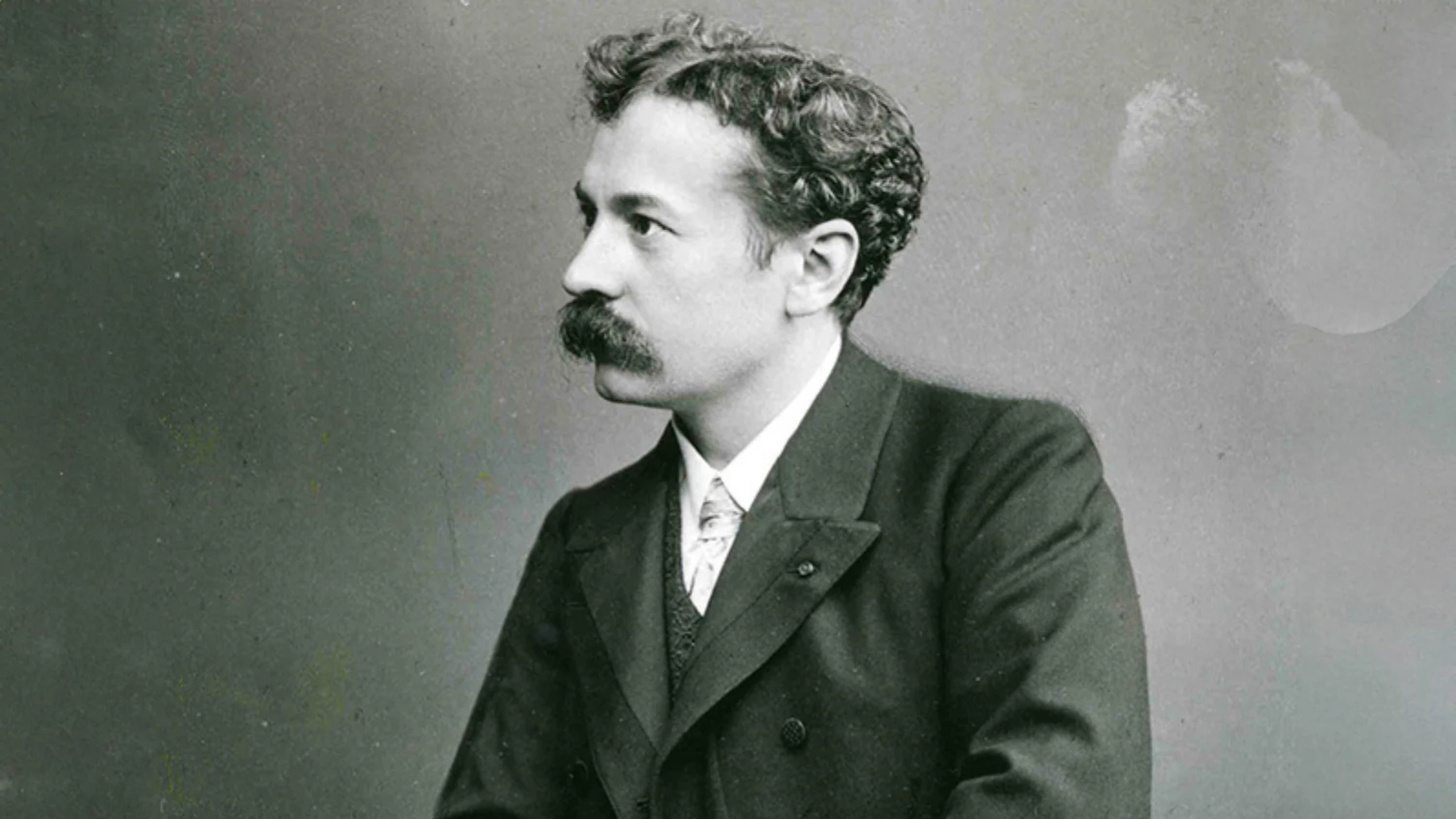René Lalique (1860-1945) is an emblematic figure of Art Nouveau, renowned for revolutionizing jewelry by integrating artistic innovation and daring materials into his creations. At a time when haute joaillerie focused primarily on the brilliance of precious stones, Lalique distinguished himself by giving priority to form, symbolism and aesthetics.
René Lalique was born in Ay, Champagne, on April 6, 1860. He spent his childhood in the region, where he discovered his passion for nature and insects. Indeed, he spent many hours observing insects and plants in the surrounding countryside, developing a taste for organic forms and natural beauty.
In 1872, at the age of 12, he left for Paris to study art, encouraged by his uncle who was a jeweler. He was apprenticed to jeweler Louis Aucoc, where he began to learn jewelry-making techniques. In 1878, Lalique entered the Ecole des Arts Décoratifs, where he studied under Jules Dalou and Léon Bonnat. He then worked as a designer, quickly attracting attention by working for prestigious houses such as Boucheron and Fouquet, Hamelin and Vever. Georges Fouquet, who was extremely famous at the time, even said of him: “ I didn’t know of any jewelry designer at the time, but here he is!
In 1885, Lalique opened his own jewelry business in Paris, despite the warnings of his entourage, including Vuilleret, who saw him as a mere draftsman who would run out of steam after a few months.
He develops his personal style and innovates by integrating glass, of course, his material of choice, but also leather, horn, enamel and mother-of-pearl. Interestingly, René prefers to use semi-precious stones rather than precious ones. His jewelry is often inspired by nature, with motifs such as butterflies, dragonflies, snakes or flowers.

Having spent his childhood and grown up in a natural environment, and thanks to his great curiosity and creativity, René quickly developed a love for Beauty and Nature. So it’s only natural that he should reproduce and sketch the wonders around him. The depiction of vegetation, butterflies, swans, the detailed wing movements of birds and insects… He began exhibiting his first original and innovative works in 1894.
He exhibited at the Salon des Artistes Français in 1897 and 1898. It was on this occasion that the famous Art Nouveau glassmaker Emile Gallé discovered him. Gallé was already a household name in France. He was full of praise for René, and talked incessantly about the incredible works he had been lucky enough to discover at the Salon.
René Lalique then took part in the 1900 Exposition Universelle in Paris. His stand was a great success. And it wasn’t long before some of the world’s most famous personalities were placing orders with him, including Sarah Bernhardt, Arconati-Visconti, the Countess of Béarn and the multi-billionaire financier Calouste Gulbenkian.

Passionate about working with glass, he set up an “experimental cabinet” in his store in 1890, where he practiced and experimented. In particular, he designed extremely refined perfume bottles, collaborating with perfumer François Coty on the Ambre Antique bottle.
Sensing the waning success of his jewelry and the end of the Art Nouveau movement, Lalique decided to diversify. In particular, he took advantage of the many possibilities offered by glass and adapted to the new style in vogue: Art Deco. He designed radiator caps and vases, for example. Success followed, and Lalique built a factory in Wingen-sur-Moder, Alsace, in 1921.
This enabled him to start industrializing his creations, which became everyday objects such as lamps and vases. In addition to his work as a glassmaker, René also offered his services as an interior decorator. In 1929, he decorated the restaurant cars of the Côte d’Azur Pullman Express.


René Lalique died in 1945 and was buried in the Père-Lachaise cemetery after a life punctuated by creation and innovation, constantly renewing himself to keep up with the times. After a long period of oblivion, Lalique’s jewelry still impresses with its complexity and refinement. They are now displayed in museums and private collections around the world, bringing René Lalique’s creative genius to life.













